〔資料〕
「10の公開質問
10 Open Questions」
竹野内真理の公開質問(April 11, 2013 )
☆ 記事URL:http://koukaishitsumon.blogspot.jp/2013/04/blog-post.html
1. 読売新聞元社主で日本TV創立者の正力松太郎氏は、米国の公文書からもPodamという名前のCIAのエージェントであったことが証明されており、正力氏がビキニ事件後の核兵器反対運動の盛り上がりを鎮静化させるため、部下の柴田氏が提案した「毒を持って毒を制す」という政策にのっとって、日本に原発を導入した張本人であるとされています。この点について、貴社は責任を感じ、国民に謝罪はしないのですか?
The former Yomiuri President, and the founder of Nippon TV, Mr. Matsutaro Shoriki, was proven to be an ex-CIA agent according to the archive documents in the US and he is known to be the father of Japanese nuclear policy. It is also a known fact that his surbordinate Mr. Shibata came up with the idea, "A poison neutralizes another poison," to introduce nuclear power in the midst of anti-nuclear test sentiment. Regarding this fact, doesn't your newspaper company feel the sense of guilt and have any intention to apologize to the public?
2. フィルター付きベントの設置を過剰とする論調を、米国が当面不要としているからと、意味不明のことを言っていらっしゃいます。いまだに貴社は、米国のCIAとつながりがあるのですか?
You argue that the requirement of filetered vents is "excessive" because the US Department of Energy says so, which is totally nonsense. Are you still connected with CIA even today?
3.福島原発事故で大量の放射能が漏れたことをかんがみればフィルター付きベントの設置は当然のことであり、技術があるのなら、以前から設置されているべきではないですか?逆に設置されていなかったのがおかしく、福島県の人々を特に被曝させたことで過失が問われるのではないですか?それとも貴社は、なんらかの目的で国民をより被曝させたいと考えているのですか?
Given that a large amount of radioactive materials were released from Fukushima nuclear accident, there should have been filtered vents installed beforehand if the technology was the establised one. Wasn't there any criminal negligence especially considering the residents' exposure in Fukushima? Or is your company purposely intending to expose people to radiation for some purpose?
4. 新規制では、活断層の定義を40万年前に動いたものを含めるとされていますが、米国カリフォルニア州が1971年に制定した活断層法では、100万年前以降に動いたものを活断層と定義しています。このギャップをどう考えますか?
In the new regulation, the definition of active faults is set to be the one which has moved within the past 400,000 years. However, in California Active Fault Law stipulated in 1971, an active fault is defined as the one which has moved within the past 1,000,000 years. What do you think of this gap?
5.「活断層が100%ないと断定するのは、非科学的だ。」とありますが、まさにその通りで、2000年の鳥取西部地震でも、2008年の岩手宮城内陸地震でも、活断層がないといわれたところで大地震が起き、活断層が地震の後に表れております。だからこそ、原発はそもそも日本にあってはならないのではないですか?
You argue that it is unscientific to ensure that there is no active faults 100%, which is exactly correct. In 2000 Western Tottori Earthquake and 2008 Iwate Miyagi Inland Earthquake, large quakes occured where no active faults had been found before and active faults emerged after the quakes. Therefore, isn't it scientific to think that there should not be any nuclear power plant in Japan?
6. 活断層が動いても大丈夫なように、とおっしゃいますが、それこそ非科学的であり、原子炉の直下または直近で活断層が動いた場合、制御棒の挿入不能や主要配管の破断がありえます。福島原発事故でも、津波の前からの配管破断による放射能漏れが疑われています。このような当たり前の事態の可能性を、なぜ無視するのですか?
You call for reinforcement of nuclear plant so that it can withstand seismic activities, which is totally unscientific. If active faults moves directly below or in vicinity of reactor core, inability of insert of control rods or rupture of main piping system could occur. It is highly suspected the piping rupture did occur in Fukushima before Tsunami reached. Why do you ignore these phenomena which can be easily predicted?
7. 「原発の停止で電力供給は綱渡りだ。」とありますが、貴社は、事故前まで原発を止めれば、3割ほど電気が足りなくなるとずっと喧伝しておりました。2000年より私は、中央電力協議会のデータから、火力水力で8月の最大需要電力も賄えるという棒グラフ(なぜか英文グラフのみ)と数値を見ており、貴社を含むすべての主要マスコミ会社に、この原発がなくとも電気が足りているというグラフと地震と原発の危険性についてFAX送信していましたが、無視され続け、非常に不思議に思っていました。そして、原発事故後、なくても足りているという事実が明らかになっています。事故前に長年、(30%電力足りなくなるという)虚偽の事実を垂れ流しながら、地震国にこれだけの原発建設を推進したことに、罪の意識はないのですか?
You say the nation's power supply is facing tough situation, but you always proclaimed that 30% of electricity will be in short before the accident. In 2000, I found that the August maximum demand exceeded installed capacity of thermal and hydro generators in Japan in the graph (but only in English!) and figures provided by the Central Electric Power Council. I kept sending FAX to all the major media companies with this graph and the potential risk of earthquake and nuclear power plants, which were ignored by all the companies including Yomiuri. Doesn't your company feel sense of guilt for having spread false data (30% shortage without nuclear power) for many years before the accident and promoted nuclear in this earthquake prone country?
8. 「火力の燃料費高騰で電気料金も上がっている。」といいますが、貴社では、今回の原子力事故における被災者への補償(特に顕著になってきている健康被害への医療費を含む)、漏れ続ける放射性物質の管理、使用済み核燃料の管理などの半永久的にかかる膨大な費用に触れずに、このようなおかしな論調を出すのはなぜですか?
You say, "The price of electricity has gone up after the price hike for fuel for thermal power", but why do you bring up this argument ignoring the enormous amount of price to be paid for compensation for the disaster victims (including medical cost for those who are getting health hazards already), for controlling releasing radioacftive materials, storage of wastes and spent fuels, etc?
9. 既に福島では3万8千人の検査した児童のうち、甲状腺がん3人、疑い7人と、2005年の国立がんセンターの統計の何十倍もの割合で甲状腺がんが見られています。福島の子供たちの甲状腺異常や甲状腺がんに全く触れていないのは、なぜですか?また、本来、子供たちの疎開を主張すべきではないですか?貴社は近い将来、この最も大事な報道を回避した責任を取る覚悟はありますか?その場合、貴社のどの部署のどなたがこの重大な過失の責任を取ってくださるかリストを示してください?
Three Fukushima kids were found to have thyroid cancer and 7 others were highly suspected among 38000 tested, which is dozens of times higher than 2005 National Cancer Institute thyroid cancer ratio. Why do you NOT touch upon thyroid abnormalities and thyroid cancer among Fukushima children at all? Isn't it your moral duty to argue the necessity of collective evacuation of children from Fukushima? Is your company ready to take responsibility for the negligence of avoiding this most important news in the near future? In that case, please list the names and their departments of those responsible for these grave negligence.
10. 質問から見られるように、貴社の報道は、社会的責任を果たすことを規定した国際法であるISO 26000 に反しているのではないでしょうか?この点において、調査を求め、国民の命にかかわる問題ですので、なるべく早期に改善策を提示していただきたいと思います。
As you can see from the questions above, I am afraid that your news reports may violate ISO 26000, international regulation which stipulates corporate responsibilities. I would ask you to investigate on this matter and show some remedial measures as early as possible since lives of people are at stake in Japan.
Sincerely,
竹野内真理、フリージャーナリスト、翻訳家
Mari Takenouchi, freelance journalist, translator
mariscontact@gmail.com
*私の家の近所で、去年から不審者が出没しているので(一度は男が2歳の息子に突然近づき抱き上げたこともあります)、申し訳ないですが、Eメールだけの連絡とさせていただければ幸いです。
*Since some suspicious people appear in my neighborhood (one time, a man suddenly approaced my 2 year old boy and picked him up), please allow me to contact you only through my e-mail.
以下は問題の貴社の社説です。
原発新規制基準 ゼロリスクにとらわれるな(4月11日付・読売社説)
原子力規制委員会が、原子力発電所に適用する新たな規制(安全)基準の最終案を決めた。
東京電力福島第一原発事故を踏まえ、従来の想定より大きな地震や津波への対策を求めた。原子炉が壊れる重大事故を防ぐため、電源や冷却機能の拡充も盛り込んだ。
事故前の基準の欠陥を改めることは必要だろう。だが、新基準の検討過程で内外から相次いだ「ゼロリスクを求め過ぎだ」との批判はほとんど反映されなかった。
問題をはらむ基準案である。
その一つは、原発敷地内の活断層の扱いだ。これまでは12万~13万年前以降に動いたものを対象としていたが、最大40万年前まで遡って調査することを課した。
規制委はすでに、これを先取りして原発敷地内の活断層を調査している。この際、島崎邦彦委員長代理は繰り返し、「活断層が100%ない」という証明を求めており、新基準にも同様の項目が設けられることになった。
あまりに非科学的な要求だ。むしろ、活断層が動いても大丈夫なよう安全設備の強度を増す工学的な対応を優先すべきである。
専門家が「過剰」と指摘する項目もある。典型例が、重大事故時に原子炉内の圧力を逃す手段であるフィルター付きベントだ。
新基準は全原発に設置を義務づけたが、米国は先月、専門家の議論を経て、米国の原発には当面、不要とした。米エネルギー省幹部が「日本の厳しい基準が海外にも影響しかねない」と懸念を示したのは、もっともである。
規制委は意見公募を経て、7月までに新基準を施行する。これに基づいて、停止中の原発の安全性について審査する。
重要なのは、審査の効率を上げることだろう。技術に詳しい職員が限られ、同時に審査できるのは3か所の原発だけという。人材確保など体制強化が必要である。
原発ごとの柔軟な対応も不可欠だ。一律に消火設備などの数を決めるのは現実的ではない。
審査では、各炉に最新技術の導入を義務づける「バックフィット制度」を適用する。安全向上は大切だが、費用がかさみ、廃炉を迫られる例も出るのではないか。
原発の停止で電力供給は綱渡りだ。火力の燃料費高騰で電気料金も上がっている。安全を確認した原発の再稼働は急務である。
規制委は、100%の安全を求める風潮にとらわれることなく、各原発の再稼働の可否を判断してもらいたい。
(2013年4月11日01時30分 読売新聞)
NRA should not get caught up in myth of completely 'risk-free' reactors
(From The Yomiuri Shimbun, April 11, 2013)
The Nuclear Regulation Authority has approved the final draft of new safety standards to be applied to the nation's nuclear power plants.
Taking lessons from the nuclear crisis at Tokyo Electric Power Co.'s Fukushima No. 1 nuclear power plant, the new standards will require operators of nuclear power plants to prepare for earthquakes and tsunami larger than those they had estimated prior to March 11, 2011.
Measures to prevent critical accidents, such as meltdowns of nuclear reactors, were also incorporated in the new standards, including energy supplies from multiple power sources and reinforcing reactor cooling systems.
It is indeed necessary to correct the weaknesses of the old safety standards in place before the nuclear crisis. However, although many people--including those inside the NRA--complained during the deliberation process that the nuclear regulatory body was going too far in seeking to reducing the risk from nuclear power plants to zero, their views were hardly reflected in the final draft.
New standards overly strict
It is clear that the final draft has a number of flaws.
One of them is the requirements on active faults found under nuclear power plants. In the previous safety standards, faults that were confirmed to have moved within 130,000 years were judged as active faults. However, the final draft will require operators to expand the scope of investigation significantly--movements within the past 400,000 years will be subject to investigation.
The nuclear regulatory body has already adopted the new criteria for researching active faults at idle nuclear power plants. While conducting the research, Acting NRA Chairman Kunihiko Shimazaki has repeatedly called on power companies to prove that they are "100 percent sure" that there are no active faults. A clause reflecting Shimazaki's requirements is expected to be included in the new safety standards.
However, it is obvious that Shimazaki's demands are extremely unscientific. Power companies should pursue approaches based on engineering, such as reinforcing the safety equipment at nuclear power plants so the power plants will be able to withstand seismic activity.
Some experts have raised concerns about other measures laid out in the final draft, pointing out their "excessiveness." One example is the requirement of filtered vents, which would help release pressure from nuclear reactors in the case of a serious accident.
The new safety standards will obligate all of the nation's nuclear power plants to install filtered vents. However, last month, the United States concluded it is unnecessary to install the filtered vents in its nuclear reactors for the time being, after hearing expert opinion. It is understandable that a senior official of the U.S. Energy Department raised concerns that Japan's strict standards may affect nuclear power plants in other countries.
After collecting public opinion on the final draft, the nuclear regulatory body plans to put the new standards into effect in July, or earlier if possible. Based on the new standards, the NRA will check whether the nation's idled nuclear reactors are suitable for restart.
Restart of N-plants urgent
What is important is to improve the efficiency of inspections. According to the NRA, it will only be able to check three nuclear power plants at a time due to a shortage of officials possessing sufficient expertise. The nuclear regulatory body must reinforce its inspection framework by taking such steps as recruiting talented people.
Flexibility is also crucial. Measures should be introduced in accordance with the specific conditions of each nuclear power plant. It is not realistic to demand all nuclear power plants have the same amount of fire extinguishing equipment, for example.
To pass inspections, nuclear power plants will be required to introduce retrofits reflecting the latest safety measures for nuclear reactors. Improving safety is important, but we are concerned that the plan would lead to higher costs, forcing power companies to shut down some reactors.
The nation's power supply faces a tough situation. The price of electricity has gone up after the price hike for fuel for thermal power plants. It is urgent to restart power plants once their safety is confirmed.
We ask the NRA to judge whether nuclear power plants are eligible for restart, without being swayed by the current public desire for the absolute safety of nuclear power plants.
(From The Yomiuri Shimbun, April 11, 2013)
投稿者 Save Kids Japan
「10の公開質問
10 Open Questions」
竹野内真理の公開質問(April 11, 2013 )
☆ 記事URL:http://koukaishitsumon.blogspot.jp/2013/04/blog-post.html
1. 読売新聞元社主で日本TV創立者の正力松太郎氏は、米国の公文書からもPodamという名前のCIAのエージェントであったことが証明されており、正力氏がビキニ事件後の核兵器反対運動の盛り上がりを鎮静化させるため、部下の柴田氏が提案した「毒を持って毒を制す」という政策にのっとって、日本に原発を導入した張本人であるとされています。この点について、貴社は責任を感じ、国民に謝罪はしないのですか?
The former Yomiuri President, and the founder of Nippon TV, Mr. Matsutaro Shoriki, was proven to be an ex-CIA agent according to the archive documents in the US and he is known to be the father of Japanese nuclear policy. It is also a known fact that his surbordinate Mr. Shibata came up with the idea, "A poison neutralizes another poison," to introduce nuclear power in the midst of anti-nuclear test sentiment. Regarding this fact, doesn't your newspaper company feel the sense of guilt and have any intention to apologize to the public?
2. フィルター付きベントの設置を過剰とする論調を、米国が当面不要としているからと、意味不明のことを言っていらっしゃいます。いまだに貴社は、米国のCIAとつながりがあるのですか?
You argue that the requirement of filetered vents is "excessive" because the US Department of Energy says so, which is totally nonsense. Are you still connected with CIA even today?
3.福島原発事故で大量の放射能が漏れたことをかんがみればフィルター付きベントの設置は当然のことであり、技術があるのなら、以前から設置されているべきではないですか?逆に設置されていなかったのがおかしく、福島県の人々を特に被曝させたことで過失が問われるのではないですか?それとも貴社は、なんらかの目的で国民をより被曝させたいと考えているのですか?
Given that a large amount of radioactive materials were released from Fukushima nuclear accident, there should have been filtered vents installed beforehand if the technology was the establised one. Wasn't there any criminal negligence especially considering the residents' exposure in Fukushima? Or is your company purposely intending to expose people to radiation for some purpose?
4. 新規制では、活断層の定義を40万年前に動いたものを含めるとされていますが、米国カリフォルニア州が1971年に制定した活断層法では、100万年前以降に動いたものを活断層と定義しています。このギャップをどう考えますか?
In the new regulation, the definition of active faults is set to be the one which has moved within the past 400,000 years. However, in California Active Fault Law stipulated in 1971, an active fault is defined as the one which has moved within the past 1,000,000 years. What do you think of this gap?
5.「活断層が100%ないと断定するのは、非科学的だ。」とありますが、まさにその通りで、2000年の鳥取西部地震でも、2008年の岩手宮城内陸地震でも、活断層がないといわれたところで大地震が起き、活断層が地震の後に表れております。だからこそ、原発はそもそも日本にあってはならないのではないですか?
You argue that it is unscientific to ensure that there is no active faults 100%, which is exactly correct. In 2000 Western Tottori Earthquake and 2008 Iwate Miyagi Inland Earthquake, large quakes occured where no active faults had been found before and active faults emerged after the quakes. Therefore, isn't it scientific to think that there should not be any nuclear power plant in Japan?
6. 活断層が動いても大丈夫なように、とおっしゃいますが、それこそ非科学的であり、原子炉の直下または直近で活断層が動いた場合、制御棒の挿入不能や主要配管の破断がありえます。福島原発事故でも、津波の前からの配管破断による放射能漏れが疑われています。このような当たり前の事態の可能性を、なぜ無視するのですか?
You call for reinforcement of nuclear plant so that it can withstand seismic activities, which is totally unscientific. If active faults moves directly below or in vicinity of reactor core, inability of insert of control rods or rupture of main piping system could occur. It is highly suspected the piping rupture did occur in Fukushima before Tsunami reached. Why do you ignore these phenomena which can be easily predicted?
7. 「原発の停止で電力供給は綱渡りだ。」とありますが、貴社は、事故前まで原発を止めれば、3割ほど電気が足りなくなるとずっと喧伝しておりました。2000年より私は、中央電力協議会のデータから、火力水力で8月の最大需要電力も賄えるという棒グラフ(なぜか英文グラフのみ)と数値を見ており、貴社を含むすべての主要マスコミ会社に、この原発がなくとも電気が足りているというグラフと地震と原発の危険性についてFAX送信していましたが、無視され続け、非常に不思議に思っていました。そして、原発事故後、なくても足りているという事実が明らかになっています。事故前に長年、(30%電力足りなくなるという)虚偽の事実を垂れ流しながら、地震国にこれだけの原発建設を推進したことに、罪の意識はないのですか?
You say the nation's power supply is facing tough situation, but you always proclaimed that 30% of electricity will be in short before the accident. In 2000, I found that the August maximum demand exceeded installed capacity of thermal and hydro generators in Japan in the graph (but only in English!) and figures provided by the Central Electric Power Council. I kept sending FAX to all the major media companies with this graph and the potential risk of earthquake and nuclear power plants, which were ignored by all the companies including Yomiuri. Doesn't your company feel sense of guilt for having spread false data (30% shortage without nuclear power) for many years before the accident and promoted nuclear in this earthquake prone country?
8. 「火力の燃料費高騰で電気料金も上がっている。」といいますが、貴社では、今回の原子力事故における被災者への補償(特に顕著になってきている健康被害への医療費を含む)、漏れ続ける放射性物質の管理、使用済み核燃料の管理などの半永久的にかかる膨大な費用に触れずに、このようなおかしな論調を出すのはなぜですか?
You say, "The price of electricity has gone up after the price hike for fuel for thermal power", but why do you bring up this argument ignoring the enormous amount of price to be paid for compensation for the disaster victims (including medical cost for those who are getting health hazards already), for controlling releasing radioacftive materials, storage of wastes and spent fuels, etc?
9. 既に福島では3万8千人の検査した児童のうち、甲状腺がん3人、疑い7人と、2005年の国立がんセンターの統計の何十倍もの割合で甲状腺がんが見られています。福島の子供たちの甲状腺異常や甲状腺がんに全く触れていないのは、なぜですか?また、本来、子供たちの疎開を主張すべきではないですか?貴社は近い将来、この最も大事な報道を回避した責任を取る覚悟はありますか?その場合、貴社のどの部署のどなたがこの重大な過失の責任を取ってくださるかリストを示してください?
Three Fukushima kids were found to have thyroid cancer and 7 others were highly suspected among 38000 tested, which is dozens of times higher than 2005 National Cancer Institute thyroid cancer ratio. Why do you NOT touch upon thyroid abnormalities and thyroid cancer among Fukushima children at all? Isn't it your moral duty to argue the necessity of collective evacuation of children from Fukushima? Is your company ready to take responsibility for the negligence of avoiding this most important news in the near future? In that case, please list the names and their departments of those responsible for these grave negligence.
10. 質問から見られるように、貴社の報道は、社会的責任を果たすことを規定した国際法であるISO 26000 に反しているのではないでしょうか?この点において、調査を求め、国民の命にかかわる問題ですので、なるべく早期に改善策を提示していただきたいと思います。
As you can see from the questions above, I am afraid that your news reports may violate ISO 26000, international regulation which stipulates corporate responsibilities. I would ask you to investigate on this matter and show some remedial measures as early as possible since lives of people are at stake in Japan.
Sincerely,
竹野内真理、フリージャーナリスト、翻訳家
Mari Takenouchi, freelance journalist, translator
mariscontact@gmail.com
*私の家の近所で、去年から不審者が出没しているので(一度は男が2歳の息子に突然近づき抱き上げたこともあります)、申し訳ないですが、Eメールだけの連絡とさせていただければ幸いです。
*Since some suspicious people appear in my neighborhood (one time, a man suddenly approaced my 2 year old boy and picked him up), please allow me to contact you only through my e-mail.
以下は問題の貴社の社説です。
原発新規制基準 ゼロリスクにとらわれるな(4月11日付・読売社説)
原子力規制委員会が、原子力発電所に適用する新たな規制(安全)基準の最終案を決めた。
東京電力福島第一原発事故を踏まえ、従来の想定より大きな地震や津波への対策を求めた。原子炉が壊れる重大事故を防ぐため、電源や冷却機能の拡充も盛り込んだ。
事故前の基準の欠陥を改めることは必要だろう。だが、新基準の検討過程で内外から相次いだ「ゼロリスクを求め過ぎだ」との批判はほとんど反映されなかった。
問題をはらむ基準案である。
その一つは、原発敷地内の活断層の扱いだ。これまでは12万~13万年前以降に動いたものを対象としていたが、最大40万年前まで遡って調査することを課した。
規制委はすでに、これを先取りして原発敷地内の活断層を調査している。この際、島崎邦彦委員長代理は繰り返し、「活断層が100%ない」という証明を求めており、新基準にも同様の項目が設けられることになった。
あまりに非科学的な要求だ。むしろ、活断層が動いても大丈夫なよう安全設備の強度を増す工学的な対応を優先すべきである。
専門家が「過剰」と指摘する項目もある。典型例が、重大事故時に原子炉内の圧力を逃す手段であるフィルター付きベントだ。
新基準は全原発に設置を義務づけたが、米国は先月、専門家の議論を経て、米国の原発には当面、不要とした。米エネルギー省幹部が「日本の厳しい基準が海外にも影響しかねない」と懸念を示したのは、もっともである。
規制委は意見公募を経て、7月までに新基準を施行する。これに基づいて、停止中の原発の安全性について審査する。
重要なのは、審査の効率を上げることだろう。技術に詳しい職員が限られ、同時に審査できるのは3か所の原発だけという。人材確保など体制強化が必要である。
原発ごとの柔軟な対応も不可欠だ。一律に消火設備などの数を決めるのは現実的ではない。
審査では、各炉に最新技術の導入を義務づける「バックフィット制度」を適用する。安全向上は大切だが、費用がかさみ、廃炉を迫られる例も出るのではないか。
原発の停止で電力供給は綱渡りだ。火力の燃料費高騰で電気料金も上がっている。安全を確認した原発の再稼働は急務である。
規制委は、100%の安全を求める風潮にとらわれることなく、各原発の再稼働の可否を判断してもらいたい。
(2013年4月11日01時30分 読売新聞)
NRA should not get caught up in myth of completely 'risk-free' reactors
(From The Yomiuri Shimbun, April 11, 2013)
The Nuclear Regulation Authority has approved the final draft of new safety standards to be applied to the nation's nuclear power plants.
Taking lessons from the nuclear crisis at Tokyo Electric Power Co.'s Fukushima No. 1 nuclear power plant, the new standards will require operators of nuclear power plants to prepare for earthquakes and tsunami larger than those they had estimated prior to March 11, 2011.
Measures to prevent critical accidents, such as meltdowns of nuclear reactors, were also incorporated in the new standards, including energy supplies from multiple power sources and reinforcing reactor cooling systems.
It is indeed necessary to correct the weaknesses of the old safety standards in place before the nuclear crisis. However, although many people--including those inside the NRA--complained during the deliberation process that the nuclear regulatory body was going too far in seeking to reducing the risk from nuclear power plants to zero, their views were hardly reflected in the final draft.
New standards overly strict
It is clear that the final draft has a number of flaws.
One of them is the requirements on active faults found under nuclear power plants. In the previous safety standards, faults that were confirmed to have moved within 130,000 years were judged as active faults. However, the final draft will require operators to expand the scope of investigation significantly--movements within the past 400,000 years will be subject to investigation.
The nuclear regulatory body has already adopted the new criteria for researching active faults at idle nuclear power plants. While conducting the research, Acting NRA Chairman Kunihiko Shimazaki has repeatedly called on power companies to prove that they are "100 percent sure" that there are no active faults. A clause reflecting Shimazaki's requirements is expected to be included in the new safety standards.
However, it is obvious that Shimazaki's demands are extremely unscientific. Power companies should pursue approaches based on engineering, such as reinforcing the safety equipment at nuclear power plants so the power plants will be able to withstand seismic activity.
Some experts have raised concerns about other measures laid out in the final draft, pointing out their "excessiveness." One example is the requirement of filtered vents, which would help release pressure from nuclear reactors in the case of a serious accident.
The new safety standards will obligate all of the nation's nuclear power plants to install filtered vents. However, last month, the United States concluded it is unnecessary to install the filtered vents in its nuclear reactors for the time being, after hearing expert opinion. It is understandable that a senior official of the U.S. Energy Department raised concerns that Japan's strict standards may affect nuclear power plants in other countries.
After collecting public opinion on the final draft, the nuclear regulatory body plans to put the new standards into effect in July, or earlier if possible. Based on the new standards, the NRA will check whether the nation's idled nuclear reactors are suitable for restart.
Restart of N-plants urgent
What is important is to improve the efficiency of inspections. According to the NRA, it will only be able to check three nuclear power plants at a time due to a shortage of officials possessing sufficient expertise. The nuclear regulatory body must reinforce its inspection framework by taking such steps as recruiting talented people.
Flexibility is also crucial. Measures should be introduced in accordance with the specific conditions of each nuclear power plant. It is not realistic to demand all nuclear power plants have the same amount of fire extinguishing equipment, for example.
To pass inspections, nuclear power plants will be required to introduce retrofits reflecting the latest safety measures for nuclear reactors. Improving safety is important, but we are concerned that the plan would lead to higher costs, forcing power companies to shut down some reactors.
The nation's power supply faces a tough situation. The price of electricity has gone up after the price hike for fuel for thermal power plants. It is urgent to restart power plants once their safety is confirmed.
We ask the NRA to judge whether nuclear power plants are eligible for restart, without being swayed by the current public desire for the absolute safety of nuclear power plants.
(From The Yomiuri Shimbun, April 11, 2013)
投稿者 Save Kids Japan










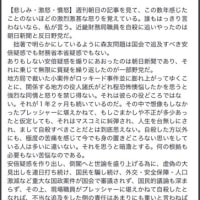
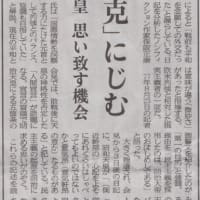
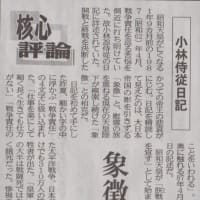
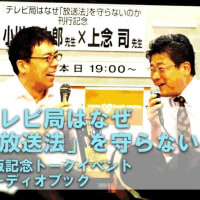

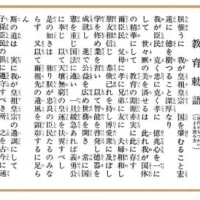



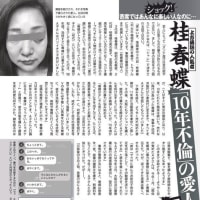
※コメント投稿者のブログIDはブログ作成者のみに通知されます